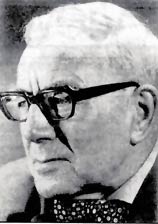Well, I'm not so sure about that. I was also not so sure of why this particular news item stuck with me. Was it because the news of recent weeks was so unmemorable (floods throughout the Midwest, Tiger Woods pulling it out, the presidential juggernaut rolling ever onward)? That might have been it; in a way, all three of these things are newsworthy yet irrelevant except for those involved (isn't most news like this?)
No, what happened was one of those small moments when you finally "get" something that has puzzled you for some time. This time, it has to do with the problem of crossing the street, the laws that relate to it and how people choose to obey or ignore them.
Flashback to last August. I wrote this post about my consternation concerning trying to cross the street in Madison. I came to the conclusion then that laws governing crossing the road (whatever they might be, and they usually give pedestrians the right-of-way) only work when everyone follows them or no-one follows them. When some do and some don't that's where the problems happen.
Then it hit me (like that garbage truck almost did last year). I was looking at the living, breathing, motorized playing out of a Nash equilibrium.
For those of you who are not familiar with the basics of game theory, or who didn't see that movie with Russell Crowe, a Nash equilibrium is a set of strategies, one for each actor in a situation, where none of these actors has the incentive to unilaterally change their strategy. In most cases, figured Nash, any one actor doing this does so at great cost to themselves, thus not maximizing their payoffs (which is just game theory jargon for outcomes).
So, applied to the traffic situation, I have my optimal set of strategies and desired payoffs and the drivers do as well. My optimal strategy is to cross the street without being killed or injured. I surmise that the drivers of the vehicles have a similar strategy: to get to their destination without any traffic mishap or vehicular manslaughter happening.
The problem here is the word "surmise," as you might imagine. Here enters another problem in game theory, that of complete information. I don't have full knowledge of the drivers and their preferences and strategies, so all I can do is guess. In the case of a place like Chicago, where virtually no-one follows the pedestrian right of way except at traffic lights and in the presence of law enforcement (moreso recently apparently), I can be more certain of my opponents and their strategies and payoffs. I cannot be so sure in a place like Madison, where some people want to get where they are going without incident and others feel the need to deviate from this strategy to let someone cross the street.
It is in this decision to let someone cross the street that the Nash equilibrium in this situation is broken. The drivers, in the estimation of the other actors (other drivers and pedestrians) changed their strategy and therefore could incur great cost to themselves and others.
Death by incomplete information? You'd better believe it happens every day.
With this new analysis, do I back away from my estimation of misplaced altruism? No. In fact, it complements it. If people kept the payoff of doing something nice (or legal) out of the equation, problems would be avoided at crosswalks all over town. Unfortunately they don't and nothing short of a reverse of the CPD's crosswalk sting would change this.
Why, you ask with furrowed brow, did you go into such detail about a revelation you had about crossing the street a year ago? As I said above, it was one of those moments of understanding and "getting it" that make these years of education, observation and analysis worthwhile.
Without these, it would seem that I was going no-where. Except perhaps into another busy intersection without my payoffs in line and my strategy thought out.
At that point, the garbage truck would be doing more than restabilizing a Nash equilibrium. It would be destabilizing my limbs.
Friends don't let friends enter a non-cooperative game without an optimal strategy.
Hey, feel free to put that on your bumper stickers and write it in greeting cards. The kids'll love it, no?
No?
Further Reading
- For more on John Nash, click here.
- For more on game theory, click here.
- For a scene from A Beautiful Mind that illustrates the Nash equilibrium, click here.
- For more on pedestrian crossings around the world, click here. C'mon, you know you want to.

3 comments:
Wow. I just feel like I read an episode of Numb3rs.
Hey that was really interesting, especially since we spent just yesterday downtown, my husband dragging myself and our two (three) chldren across eight lanes of Lake Shore traffic as the light changed, talk about taking lives into your own hands.
I am guilty of all too often assuming that traffic will stop for pedestrians (though I am usually vigilant of walk/don't walk signs, if for no other reason than to teach my children,) because watching for crossing pedestrians is one of my biggest headaches when driving through the Loop.
Two massive run-on sentences later, welcome back to the blogging world!
This year I was in Egypt trying to cross the street and dutifully looking both ways. An Egyptian came to me and asked why I was looking to my left and right. I told him, and he laughed and said "in egypt when crossing a street you only look up and pray to god that you're able to get across"
Greg
Post a Comment